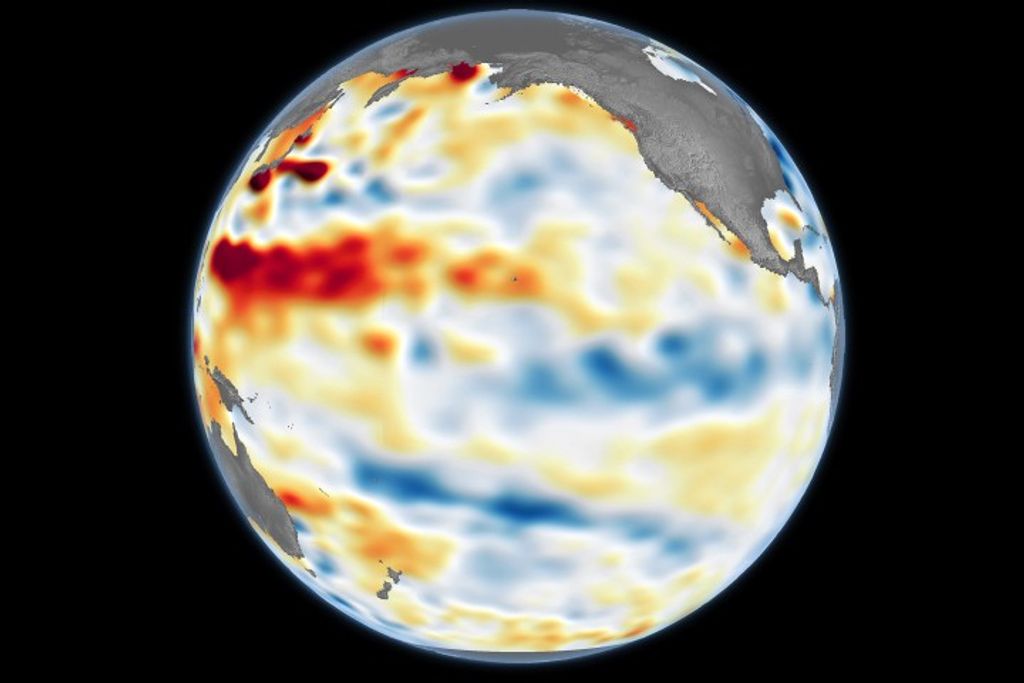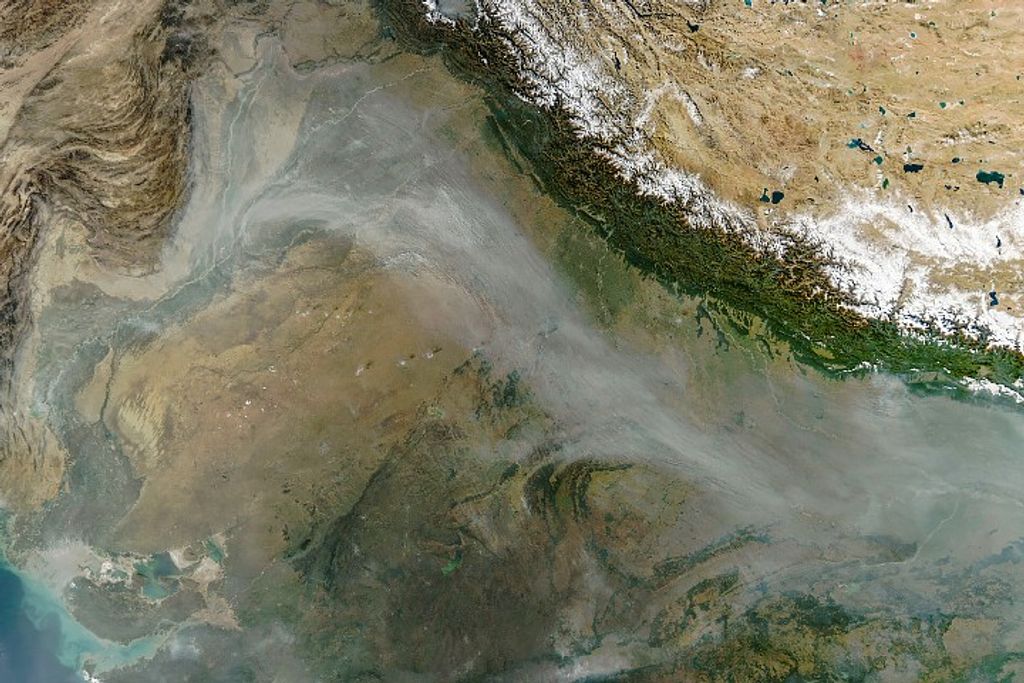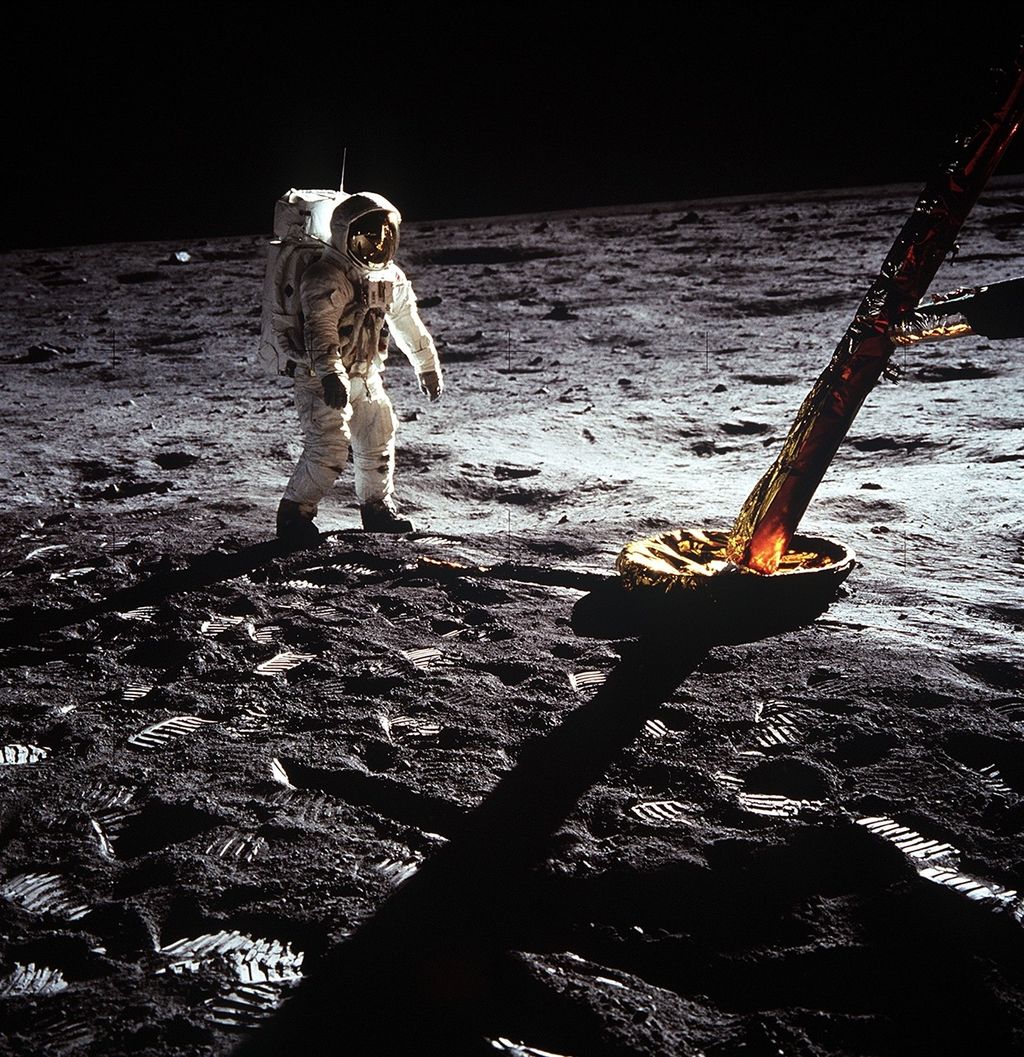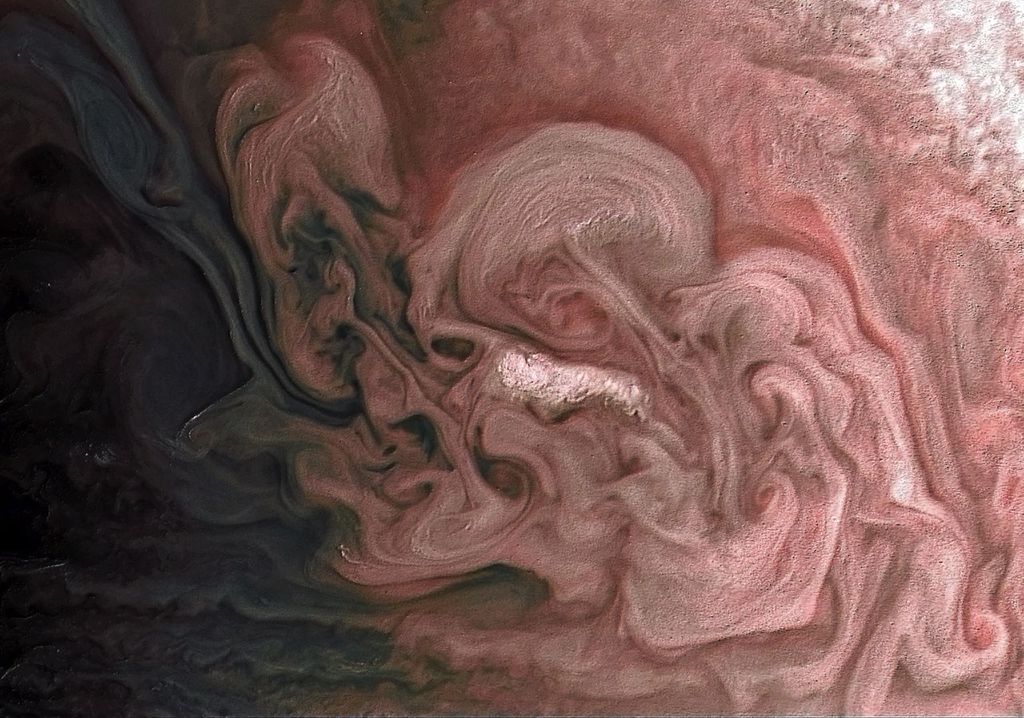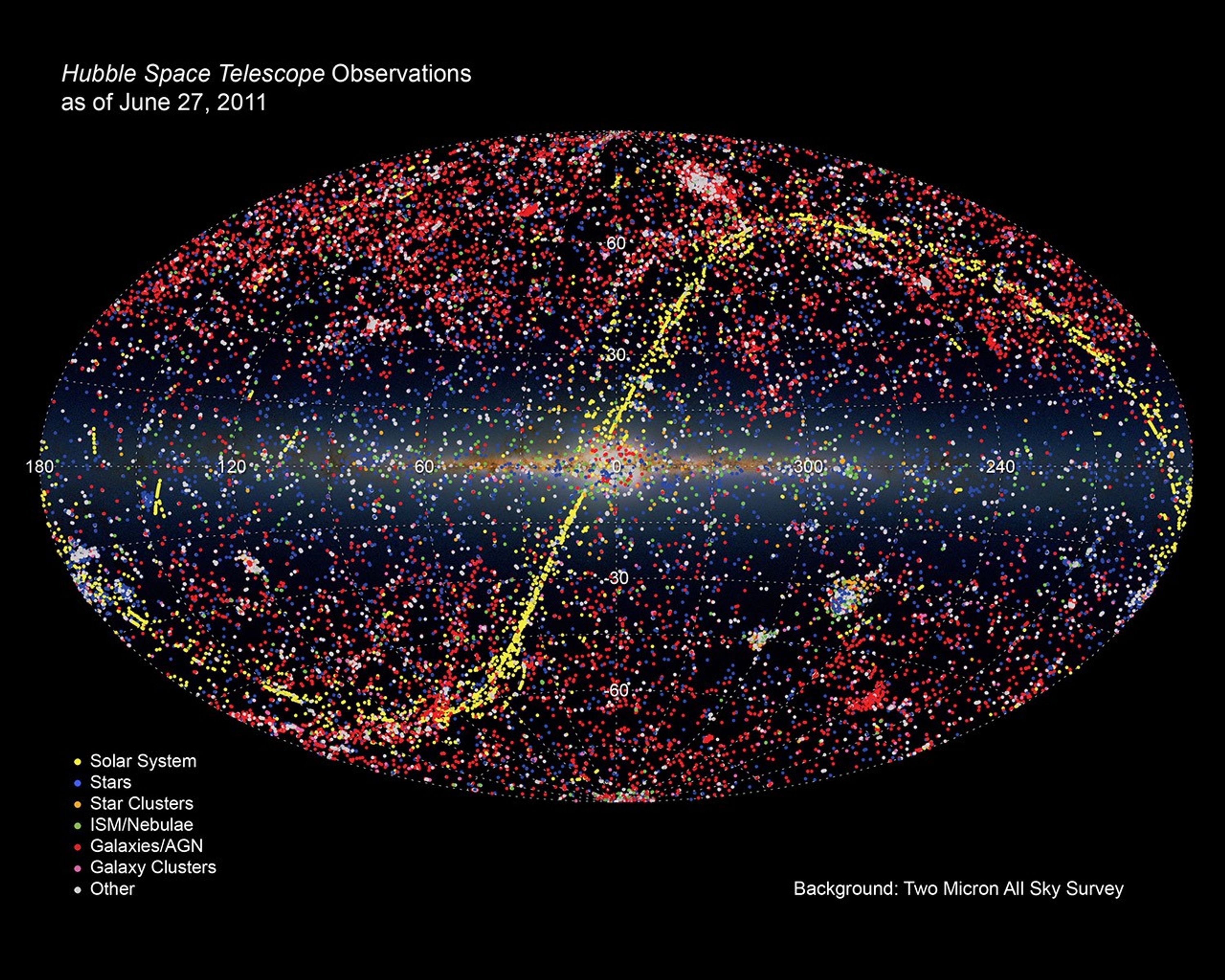1 min read
Artist’s View of Extrasolar Planet HAT-P-7b

This is an artist's concept of the extrasolar planet HAT-P-7b. It is a "hot Jupiter" class planet orbiting a star that is much hotter than our Sun. Hubble Space Telescope's millionth science observation was trained on this planet to look for the presence of water vapor and to study the planet's atmospheric structure via spectroscopy. Planets with orbits inclined nearly edge-on to Earth can be observed passing in front of and behind their stars. This allows for the planetary atmospheres to be studied by Hubble's spectrometers. Hubble's unique capabilities allow astronomers to do follow-up observations of exoplanets to characterize the composition and structure of their atmospheres.
About the Object
- R.A. PositionR.A. PositionRight ascension – analogous to longitude – is one component of an object's position.19h 28m 59s
- Dec. PositionDec. PositionDeclination – analogous to latitude – is one component of an object's position.+47°58' 11"
- ConstellationConstellationOne of 88 recognized regions of the celestial sphere in which the object appears.Cygnus
- DistanceDistanceThe physical distance from Earth to the astronomical object. Distances within our solar system are usually measured in Astronomical Units (AU). Distances between stars are usually measured in light-years. Interstellar distances can also be measured in parsecs.About 1,044 light-years or 320 parsecs
- DimensionsDimensionsThe physical size of the object or the apparent angle it subtends on the sky.The planet HAT-P-7b is 1.4 times Jupiter's diameter
About the Data
- Data DescriptionData DescriptionProposal: A description of the observations, their scientific justification, and the links to the data available in the science archive.
Science Team: The astronomers who planned the observations and analyzed the data. "PI" refers to the Principal Investigator.The HST data are from proposal 12181: D. Deming (University of Maryland), E. Agol (University of Washington), A.S. Burrows (Princeton University), D. Charbonneau (Harvard University), Mark Clampin (NASA/GSFC), J.-M. Desert (Harvard University), R. Gilliland (STScI), H. Knutson (California Institute of Technology), N. Madhusudhan (Princeton University), A Mandell (NASA/GSFC), S. Seager (MIT), and A. Showman (University of Arizona). - InstrumentInstrumentThe science instrument used to produce the data.HST>WFC3/IR
- Exposure DatesExposure DatesThe date(s) that the telescope made its observations and the total exposure time.July 4, 2011, Exposure Time: 1427 minutes
- FiltersFiltersThe camera filters that were used in the science observations.G141 (grism), F139M (water/methane line)
- Object NameObject NameA name or catalog number that astronomers use to identify an astronomical object.HAT-P-7b
- Object DescriptionObject DescriptionThe type of astronomical object.Eclipsing extrasolar planet and host star
- Release DateJuly 5, 2011
- Science ReleaseNASA’s Hubble Makes One Millionth Science Observation
- Credit
Related Images & Videos
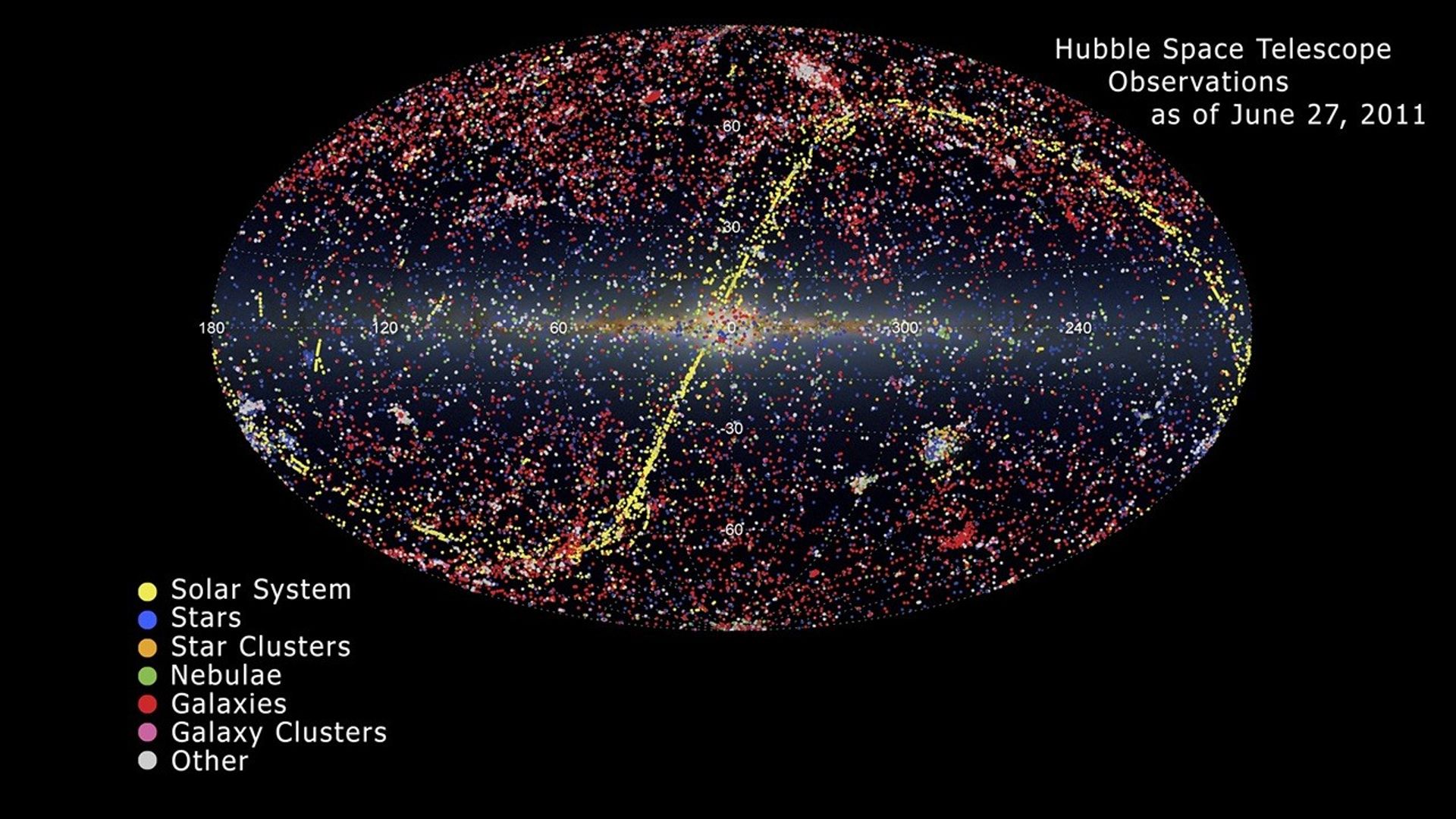
Hubble Space Telescope Observations on the Sky
This animation starts with a flat projection of the entire sky. In this projection the sky is bisected by the plane of our Milky Way galaxy. Hubble Space Telescope target locations over the 21 years are shown sequentially, from solar system to extragalactic. Stellar targets are...
Share
Details
Last Updated
Aug 17, 2025
Contact
Media
Claire Andreoli
NASA’s Goddard Space Flight Center
Greenbelt, Maryland
claire.andreoli@nasa.gov









